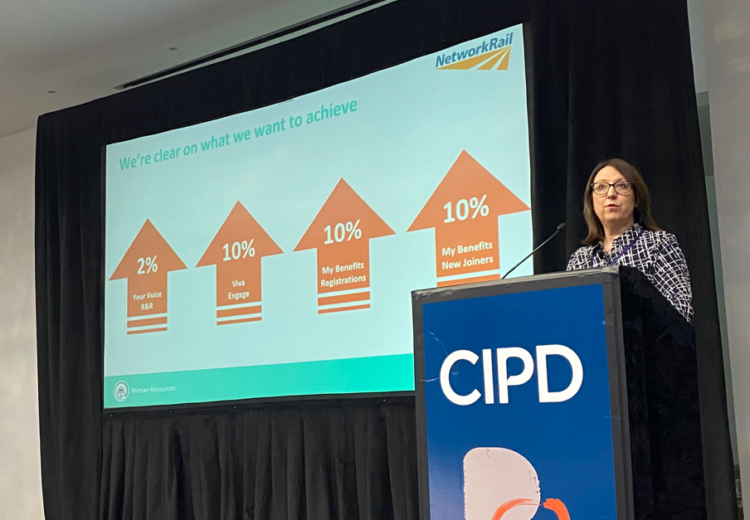Employer Network Rail has implemented a 75 percent discount for train travel for its workforce as part of a benefits and reward package revamp after “disappointing” employee survey results last year.
The survey found that employee satisfaction with benefits and pay was around 45 percent.
“We were a little bit disappointed with that to be honest,” said Laura Gardner, head of reward at the public sector organisation, speaking at the recent CIPD Rewards and Benefits Conference in London.
“We think we’ve got a competitive package, so we think [this score] isn’t necessarily about the package we offer. We think it’s about the fact that we don’t reach everyone and reaching employees across such a huge geographical area is a hard nut to crack, but it’s one that we are working on.”
Re-engaging with their workforce on reward was a top priority, but Gardner said that they also wanted to be creative with what they offer. This is what led to the decision to bring in the 75 percent discount for train travel.
Gardner explained that when you tell people you work for Network Rail they assume you get free train travel.
“They say: ‘It’s good you get free travel.’ We don’t, nor do we get discounted or free business travel.
“But what we were able to do last year was work with our partners in the railway industry and implement a scheme to give our employees 75 percent discount off train travel. It was a huge win. It’s the travel outside of commuter hours for the employee, their partner and their dependents under the age of 18.”
Gardner said that 55 percent of the eligible workforce has signed up for it. The employer has mirrored this in its season ticket for commuting and will now subsidise it for up to 75 percent of ticket value. “Again, it’s a huge win for employees as well as for us,” she said.
Complex history
Network Rail has a large, diverse and unionised workforce of 40,000 people located across England, Scotland and Wales. The employer also has a long and varied history, starting in 1948 and moving from public ownership to private, as Rail Track, and back again before being formally reclassified as a public sector organisation or an arm’s length body of the Department for Transport in 2014.
Gardner said: “That history shaped Network Rail as the organisation that exists today. It shapes our workforce and it shapes the challenges that we have in managing pay, rewards and benefits in our organisation.”
For example, in 2004 maintenance workers were moved from private companies to Network Rail. “They brought with them 66 different sets of terms and conditions, many of those being pay related,” she said.
The employer’s current status also means its finances are agreed in five year settlements. Its latest settlements started in April 2024 and Gardner said this means the organisation has financial stability, which she said “is a huge benefit and we see it as a gift. Not many organisations know that funding for the next five years”.
On the flip side of that is that the organisation knows there is no new money, she added. “So whatever we do in the next five years, it needs to fit in that funding envelope and it needs to fit with the delivery plan that was agreed with the Department for Transport and HM Treasury for that five year period.
“So we do want to do something new, and that needs to be creative. We need to do the best with what we have for our workforce.”
She said that the reward team listened to employee feedback and as a result has increased the cycle to work limit from £1,000 to £3,000, which has prompted a 100 percent increase in orders.
The employer has also invested in a discounted shopping scheme to give people an extra 1 percent or 2 percent of discount for food shopping. Gardner said while it might not sound like a huge increase they have seen a 16 percent increase in registrations to the online shopping platform.
It has also introduced five days of paid carer’s leave, so people don’t need to take annual leave or unpaid leave.
Gardner said her team is also working hard on the challenge of communicating reward and benefits to front line staff.
“We have 30,000 employees signed up to our My Benefits registration platform. Our workforce is 40,000, so 10,000 are missing.”
After looking at the benefits platform use data she said they were surprised to find that it was employees under 20 and over 51 who were not engaged.
As a result, Network Rail is conducting employee focus groups to find out what the barriers and hurdles are for employees accessing employee benefits and the employer is rethinking its benefits communication approach.













